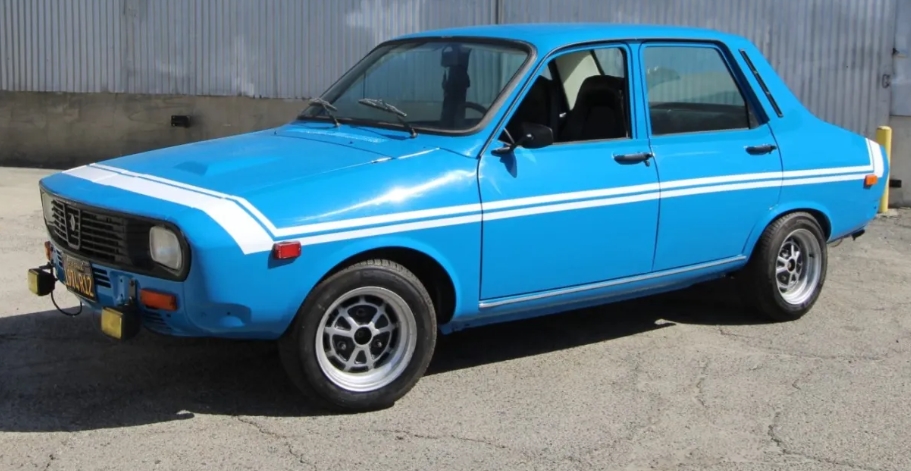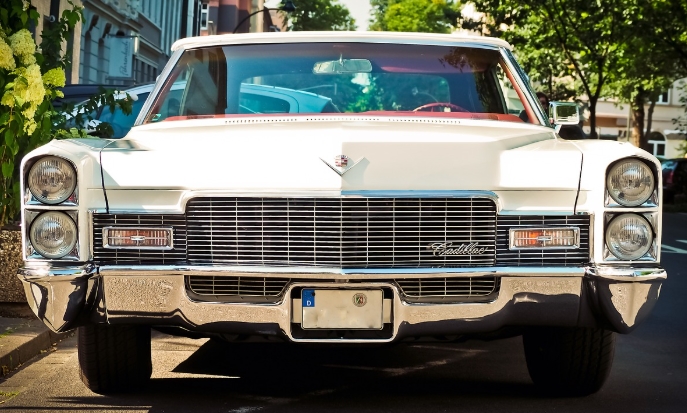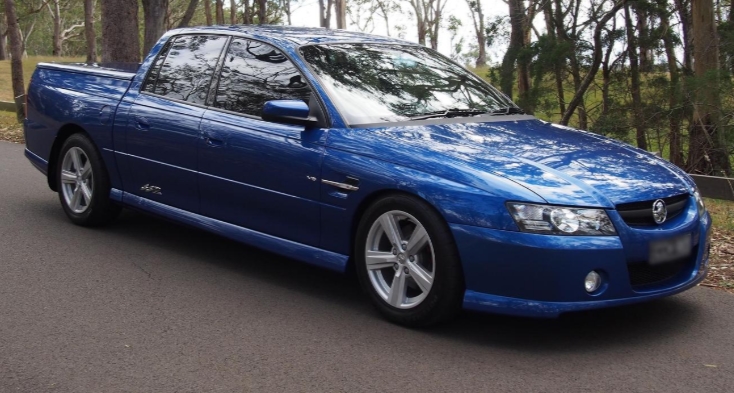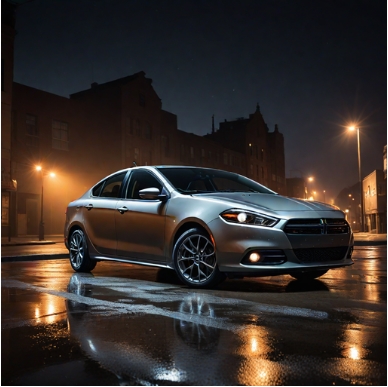The Numerical Evolution: Charting the Course of Renault’s Family Cars – Renault 12 14 16 18
In the post-war boom of the 1960s and 70s, European car manufacturers were locked in a fierce battle to define the modern family car. Amidst this competitive landscape, French automaker Renault embarked on a period of remarkable innovation and diversification. Shifting from its rear-engined past, the company embraced front-wheel drive and explored radical new concepts in packaging and versatility. The story of this era can be compellingly told through the evolution of four key models, identified by their simple numerical designations: the Renault 12, 14, 16, and 18. Though not launched in numerical order, together they represent a fascinating journey of design philosophies, from groundbreaking revolution to pragmatic consolidation.
The Renault 16 (1965-1980): The Architect of the Modern Hatchback
Before all others in this quartet came the Renault 16, a car so far ahead of its time that its influence is still felt in every hatchback on the road today. Unveiled at the 1965 Geneva Motor Show, the R16 was a radical departure from the conventional three-box saloons that dominated the family car market. Renault’s engineers, led by Yves Georges, envisioned a car that blended the comfort of a saloon with the practicality of an estate. The result was the world’s first mass-produced family hatchback.
This innovative ‘dossier-hayon’ (hatchback) design, combined with a sophisticated front-wheel-drive layout and supple long-travel independent torsion bar suspension, provided a peerless combination of ride comfort and practicality. The rear seats could be folded, slid, or removed entirely, offering a multitude of configurations for passengers and luggage. Its revolutionary design and engineering excellence were immediately recognized, and the Renault 16 was crowned European Car of the Year in 1966.
Models and Trim Levels Over the Years:
1965: The R16 launched with a single 1470cc aluminium-block engine. The initial trim levels were the L (base model) and the more common GL (Grand Luxe), which featured better interior trim and additional equipment.
1968: Renault introduced the high-performance TS (Tourisme Sportif). This model boasted a new 1565cc engine producing 83 bhp, a five-speed manual gearbox (a rarity at the time), and a host of sporty and luxury features, including a rev counter, iodine headlights, and electric front windows.
1969: A three-speed automatic transmission option was introduced, creating the TA (Transmission Automatic) model, which used the standard 1565cc engine from the L/GL.
1973: The range was topped by the luxurious TX. This flagship model featured a more powerful 1647cc engine (93 bhp), a five-speed gearbox as standard, and luxury appointments like alloy wheels, central locking, and tinted windows, cementing the R16’s position as a comfortable, fast, and prestigious tourer.
Production of the R16 finally ceased in 1980 after an incredible 15-year run and over 1.8 million units sold. It had successfully pioneered a new automotive genre, proving that a family car could be both elegant and supremely versatile.
The Renault 12 (1969-1980 in France): The Global Workhorse
While the R16 catered to the sophisticated European buyer, Renault identified a need for a simpler, more robust, and conventional family car to replace the aging Renault 8 and 10. This new model had to be tough enough for export markets with poor road conditions, easy to manufacture, and affordable to maintain. The answer, launched in 1969, was the Renault 12.
Unlike the complex R16, the R12 used a more traditional three-box saloon design. It retained front-wheel drive but placed its engine longitudinally ahead of the front axle, a simpler and more durable layout. Its suspension featured a solid rear axle, prioritizing strength over the R16’s sophisticated ride. The R12 was an unpretentious, durable, and spacious car that quickly found favor worldwide. Its success was monumental, not just in Europe, but through licensed production in countries like Romania (as the Dacia 1300), Turkey (as the Renault 12 Toros), and Australia.
Models and Trim Levels Over the Years:
1969: The R12 Saloon (Berline) was launched with a 1289cc engine. Initial trims were the basic L and the better-equipped TL, which added features like armrests and two-speed wipers.
1970: The highly practical estate version, the Break, was introduced. A TR (Tourisme Routière) model also appeared, which paired the TL trim with an automatic gearbox.
1972: The legendary Gordini model arrived. Transformed by the famous tuning wizard, it featured a 1565cc engine from the R16 TS, tuned to 113 bhp. With a reinforced chassis, ventilated disc brakes, and a five-speed gearbox, it was a true performance saloon, instantly recognizable in its French Blue paint with white stripes.
1975: The R12 received its major facelift (Phase 2). This brought a redesigned grille, new dashboard, and updated rear lights. The trim hierarchy was simplified to L, TL, and the sportier TS, which used the standard 1.3L engine but added features like Gordini-style wheels and extra headlights. The Gordini was discontinued this year.
In France, production ended in 1980, but the R12’s story was far from over. As the Dacia 1300, its production in Romania continued with various updates until 2004, a testament to its fundamentally sound and enduring design.
The Renault 14 (1976-1983): The Misunderstood Innovator
By the mid-1970s, a new class of car was emerging: the compact family hatchback, pioneered by the Volkswagen Golf. To compete in this crucial segment, Renault designed the R14 to slot between the small R5 and the larger R12. Launched in 1976, the R14 was an engineering-led vehicle with advanced packaging, offering remarkable interior space for its size.
It was Renault’s first car to feature a transverse engine, a space-saving layout that would become the industry standard. The engine itself was the X-Type “suitcase” engine, a product of a joint venture with Peugeot, so-called because it could be tilted backwards for maintenance. However, the R14’s commercial success was hampered by two major issues. Firstly, its rounded, slightly bulbous styling earned it the nickname “la poire” (the pear), a name actively used in an ill-fated advertising campaign that suggested it was a car to be avoided. Secondly, early models suffered from body rust issues, which damaged its reputation.
Models and Trim Levels Over the Years:
1976: The R14 was launched with a 1218cc engine in two trims: the spartan L and the more popular TL, which added a heated rear window and a rear wash-wipe system.
1979: The range expanded significantly. The GTL was introduced, focusing on economy with a detuned engine but higher equipment levels. At the other end of the spectrum, the TS model arrived, featuring a more powerful 1360cc engine, a five-speed gearbox, alloy wheels, and electric front windows.
1980: A Phase 2 facelift attempted to address the styling criticisms. It featured a revised front end with indicators moved from the bumper to the sides of the headlights, along with new bumpers and an updated interior.
Despite its technical merits and spacious cabin, the Renault 14 never achieved the sales success of its rivals. It was discontinued in 1983, a lesson in how brilliant engineering could be undone by public perception and marketing missteps.
The Renault 18 (1978-1986 in France): The Mainstream Consolidator
Learning from the R14’s ordeal, Renault’s next family car was a far more conservative proposition. The Renault 18, launched in 1978, was designed as a direct successor to the hugely successful R12, and eventually, it would also replace the R16. It was based on the R12’s proven mechanicals but wrapped in a much more modern, sleek, and aerodynamic body that appealed to international tastes.
The R18 was the quintessential car of its time: a conventional but handsome saloon and estate that offered a wide range of engines and trims to suit every need, from basic economy to turbocharged performance and even four-wheel drive. It successfully consolidated Renault’s position in the family car market, becoming a strong seller across Europe and finding a market in North America through the company’s partnership with American Motors (AMC).
.
NO MORE dead batteries with this:

.
Models and Trim Levels Over the Years:
1978: The R18 saloon launched with four trim levels: the base TL (1397cc), the better-equipped GTL, the sportier TS (1647cc), and the luxurious GTS.
1979: The capacious Break (estate) version was added to the lineup.
1980: The iconic Turbo model was unleashed. Powered by a 1.6L turbocharged engine producing 110 bhp (later 125 bhp), it featured distinctive alloy wheels, a sporty body kit, and a “Turbo” logo-adorned interior, making it a desirable performance hero of the era.
1981: Diesel power arrived with the TD and GTD models, using a 2.1L diesel engine, reflecting the growing demand for fuel efficiency.
1982: A unique Break 4×4 model was briefly offered, a niche but interesting precursor to the modern crossover.
1983: The R18 received its Type 2 update, featuring a new integrated front spoiler, a revised grille, and a completely new, more modern dashboard inspired by the Fuego coupé.
1984: The range was crowned by the GTX, which was fitted with a powerful 2.0L engine. In the US market, fuel-injected versions were sold as the 18i and Sportwagon.
The Renault 18 successfully bridged the gap between the rugged utilitarianism of the R12 and the more sophisticated cars of the 1980s. When French production ended in 1986 to make way for the Renault 21, it had sold over 2 million units, closing a pivotal chapter in Renault’s history.
Together, the 16, 12, 14, and 18 tell a story of a manufacturer unafraid to experiment. From the visionary R16 to the dependable R12, the ambitious R14, and the pragmatic R18, Renault navigated the changing demands of the family car market, leaving behind a legacy of innovation, global success, and valuable lessons learned.







